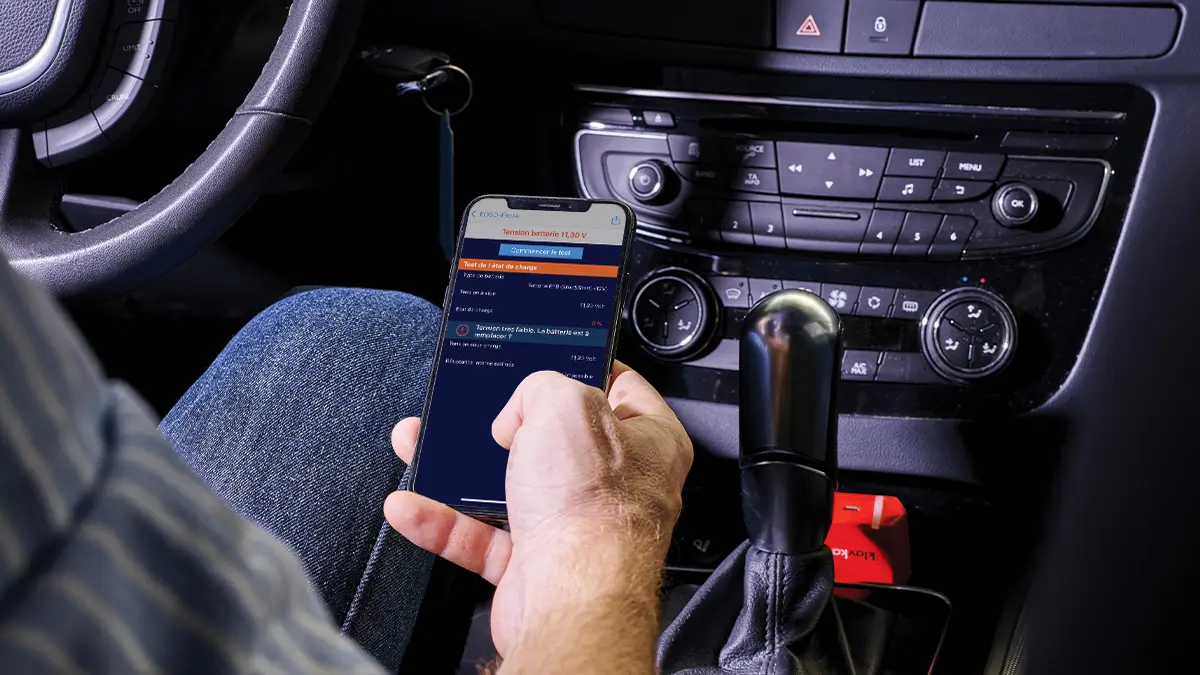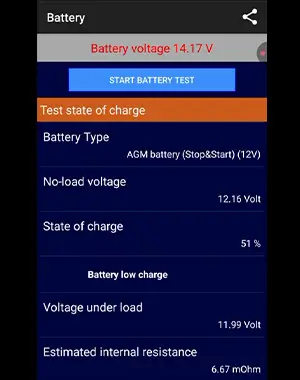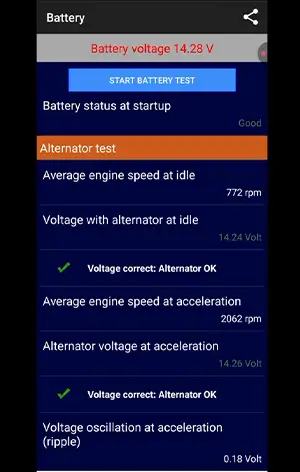The battery warning light is one of the red or orange dashboard indicators you may see in your car. It indicates a malfunction in the charging system, typically an issue with the battery or alternator.
How to test your car battery?
How to turn off the warning light?
Is it dangerous to drive with the light on?


Are you looking for a car scanner ?
What to do if the battery warning light stays on?

If the battery warning light stays on after starting, follow these steps to identify the cause and find suitable solutions.
DIY troubleshooting
Here are some basic checks you can perform:
Clear the battery warning light without a Car Diagnostics Scanner
- Disconnect the battery: Turn off the ignition, then disconnect the battery for 10 to 15 minutes. This may reset the electronic system, but it does not fix the root cause.
- Check the terminals: Ensure the battery terminals are clean, tight, and corrosion-free. A poor connection can disrupt the system.
- Inspect the accessory belt: If the belt is worn or broken, the alternator won’t charge the battery. Replace it if needed.
- Check the fuses: A blown fuse in the charging circuit may also trigger the warning light. Refer to your vehicle's manual to locate the relevant fuses.
These actions may be enough if the issue is minor.
How to test your battery with Klavkarr
If you’ve resolved the issue but the warning light remains, you can clear it using the klavkarr 310 Car Diagnostics Scanner. Here's how:
- Turn on the ignition
- Plug the klavkarr into your car’s OBD port
- Launch the EOBD-Facile app on your smartphone/tablet
- Select your interface and connect
- Choose your vehicle's make and model
- Select the control units to scan (e.g., charging system or engine)
- Run a diagnostic
- Tap “Battery”, then “Start test” and click “Ok”
- Turn on your ventilation and click “Ok”
- For a start-up test, click “Yes” and start your engine
- To test the alternator, click “Yes”
- Accelerate and hold at 2000 RPM
- Read the results
How to interpret the results
This battery test has three parts:
- Battery charge test
- Starting test
- Alternator test
Test 1: Battery charge level

The acceptable charge level depends on battery type. Knowing the technology used in your car battery is important.
Here are the minimum recommended charge thresholds:
- Lead-acid battery: 50%
- EFB battery: 40%
- AGM battery: 20%
If your charge level is below these, your battery is weakening, which could lead to difficult starts or electronic issues.
Here’s a chart of typical open-circuit voltage for a lead-acid battery:
| Voltage (V) | |
|---|---|
| Above 13 V | Overcharged battery |
| 12.4 V to 12.7 V | Good condition |
| 11.8 V to 12.3 V | Discharged battery |
| Below 10.4 V | Dead battery |
Test 2: Starting performance

A voltage drop of around 2 volts is normal during starting due to high starter demand.
However, if voltage drops below 7 V (for lead-acid batteries), it may indicate a weak or failing battery.
Difficulty in voltage recovery after starting could indicate an alternator issue.
Here is a chart of minimum start voltage as measured by klavkarr 310:
| Voltage (V) | |
|---|---|
| Above 10.4 V | Good |
| 7 V to 10.4 V | Weak |
| Below 7 V | Poor |
Test 3: Alternator condition

A red result on the alternator test may indicate:
- Voltage below 13.2 V: insufficient charging power, leading to battery drain
- Voltage above 15 V: overcharging, which may damage electrical components
Here’s a summary table of battery voltage with alternator (klavkarr 310):
| Voltage (V) | |
|---|---|
| Above 15 V | Regulator issue |
| 13.2 V to 15 V | OK |
| Below 13.2 V | Issue with regulator and/or alternator and/or belt |
Key takeaways
General rule:
- Engine off: voltage should be between 12.4 V and 12.7 V
- Engine running: voltage should be between 13.8 V and 14.5 V
If voltage remains low with engine running, the alternator or belt is likely the cause.
We recommend testing your battery regularly, ideally at the start of winter, to monitor its health.
Call a professional
If you don’t have the tools or if the issue is more serious, contact a mechanic. They can check:
- Battery and alternator condition
- Wiring
- Ground connections
- Charging quality
A professional can also test the voltage regulator, often a cause of faults.

Are you looking for a car scanner ?
Can you pass the roadworthiness test with the battery warning light on?
No. While not a blocking defect on its own, the battery warning light can indicate a serious electrical fault. It also signals a charging issue that may cause further failures. It is strongly recommended to fix the issue before the inspection.
In conclusion
Don’t ignore the battery warning light. Even if your vehicle still runs, it's a warning about a critical component. If left unresolved, it could lead to sudden breakdown.
Want to know more?
That's it for this article on how to test your car battery. If you have tips or questions, feel free to share them in the comments.
You can also share this article with your friends on social media!

